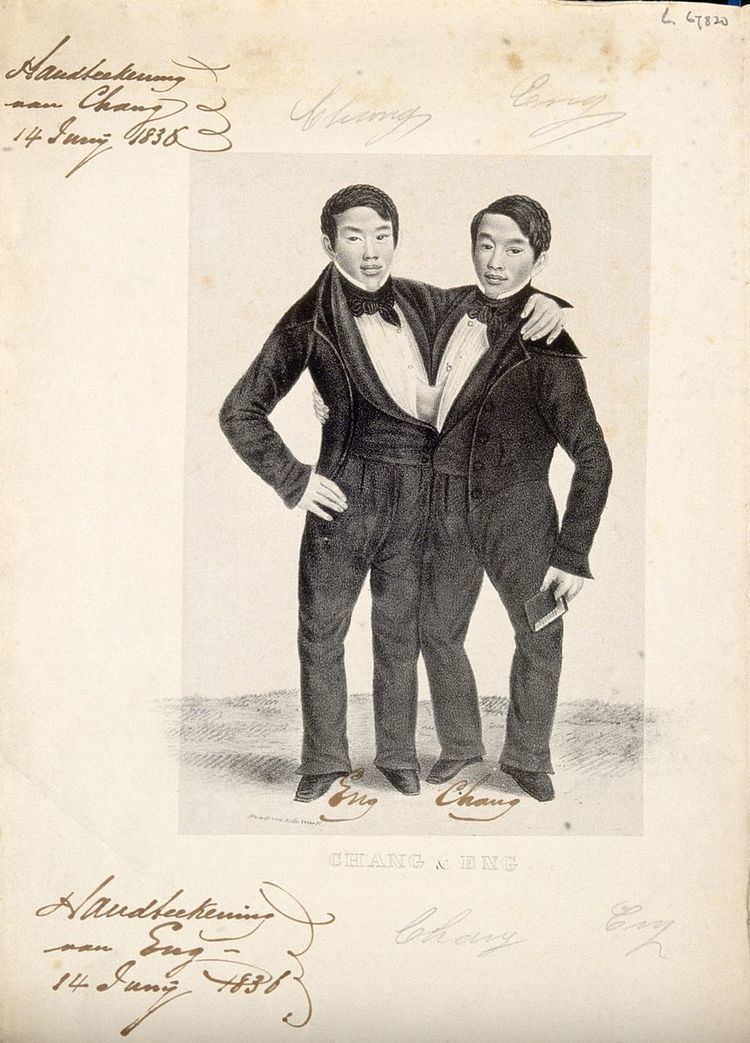Name Alfred Hoffy | ||
 | ||
Alfred A. Hoffy (1796–1872) was a mid 19th century American lithographer and botanical illustrator who founded the first American periodical devoted solely to fruit cultivation.
Biography
Alfred Hoffy was born in London, England, in 1796. As a young man he joined the British Army and rose to the rank of major. He fought in the Battle of Waterloo, during which he served as an aide-de-camp to the Duke of Wellington, and later commanded his own regiment.
In 1830, Hoffy left the army and emigrated to the United States, landing in New York, where he went into business with the British lithographer J.T. Bowen. In 1837, he created a well-known lithographic portrait of the conjoined twins Chang and Eng Bunker. Around 1838, Bowen and Hoffy moved their lithography business to Philadelphia, where Hoffy created lithographic illustrations for the local newspaper, The North American. His subjects ranged from news events—the arrival of an Egyptian sarcophagus in Philadelphia; the 1835 Great Fire of New York—to portraits drawn from daguerreotypes of such well-known people as General Santa Anna and financier Cyrus West Field. He also produced many of the plates for the fashion periodical U.S. Military Magazine published by Duval and Huddy between 1839 and 1842 and contributed lithographic plates to Thomas McKenney and James Hall's History of the Indian Tribes of North America.
In Philadelphia, Hoffy married Emma Jane Patterson, with whom he had six daughters and two sons.
Hoffy was very interested in fruit production in America, and in the early 1840s, he founded a periodical on American fruit with color plates that he intended would match the quality of those found in European journals. Hoffy's Orchardist's Companion: A Quarterly Journal, Devoted to the History, Character, Properties, Modes of Cultivation, and All Other Matters Appertaining to the Fruits of the United States was praised in the local and national press for its usefulness and especially for the "superb colored engravings of fruits". Despite this, just 5 issues were published over two years (1841–43) before Hoffy had to stop because production proved to be too expensive and he could not cover his costs. Hoffy's Orchardist's Companion was the first American periodical devoted solely to fruit cultivation.
Following this, Hoffy began work with the physician and amateur pomologist William D. Brincklé on a new series of publications on native North American fruits to be published under the general title North American Pomologist. Individual volumes would be edited by Brincklé (who was for many years the vice-president of the Philadelphia Horticultural Society) and would consist of 36 pages of information on different kinds of fruit illustrated with 10 color plates. The illustrations were produced as stone lithographs drawn by Hoffy (signed "From Nature by A. Hoffy") and colored under his direction. The fruit is usually shown in a full-color side view, sometimes accompanied by a simple black outline of the fruit's profile. Hoffy and Brincklé felt this series was needed because of "repeated disappointments which have attended the cultivation of Foreign Fruits in this country" and also to clear up increasing confusion over common fruit names. The entire series was published together in 1860 in a single volume as Hoffy's North American Pomologist.
In the late 1860s, Hoffy moved his family to Brooklyn, New York, where he died on March 10, 1872. He is buried in Green-Wood Cemetery.
